Taking a break from the busses, we took a flight from Ho Chi Minh City up to Da Nang on the east coast of Vietnam. Da Nang was the place where the American troops first landed on Vietnamese soil, and later was ravaged by chemical weapons. It is now one of the areas that are part of a cleansing programme to finally get rid of the aftermath of the war some 43 years later.
I had no real idea of what I was expecting, but the number of hotels and apartments under construction along the coast really doesn’t bode well for it staying a quiet and laid back area. This continued all the way down the coast, maybe 20 kilometres or so, until we turned inland across the paddy fields toward Hoi An.
Now I haven’t really gone into lots of detail about the hotels we’ve stayed in, but seriously, anyone visiting the town should consider staying where we did.
The Goda Boutique Hotel is a genuine bargain. It was actually Georgia and Adam (my daughter and her partner) who made us aware of the Goda. We paid about £16 per night for a room that in the uk would cost at least £50 if not £75 per night. It was a decent size, clean and with a small balcony. It also included (a good) breakfast. As we were there for more than 2 nights they gave us dinner one night as well! And we had free bike hire. Now the bikes weren’t that great, the brakes were a bit rubbish, but they did get us around. The staff were so helpful and friendly we couldn’t have wanted for more. When we left, we had a hand written, stand up card, thanking us for our visit. It just goes to prove that you don’t have to pay top dollar to get great service and a great stay.
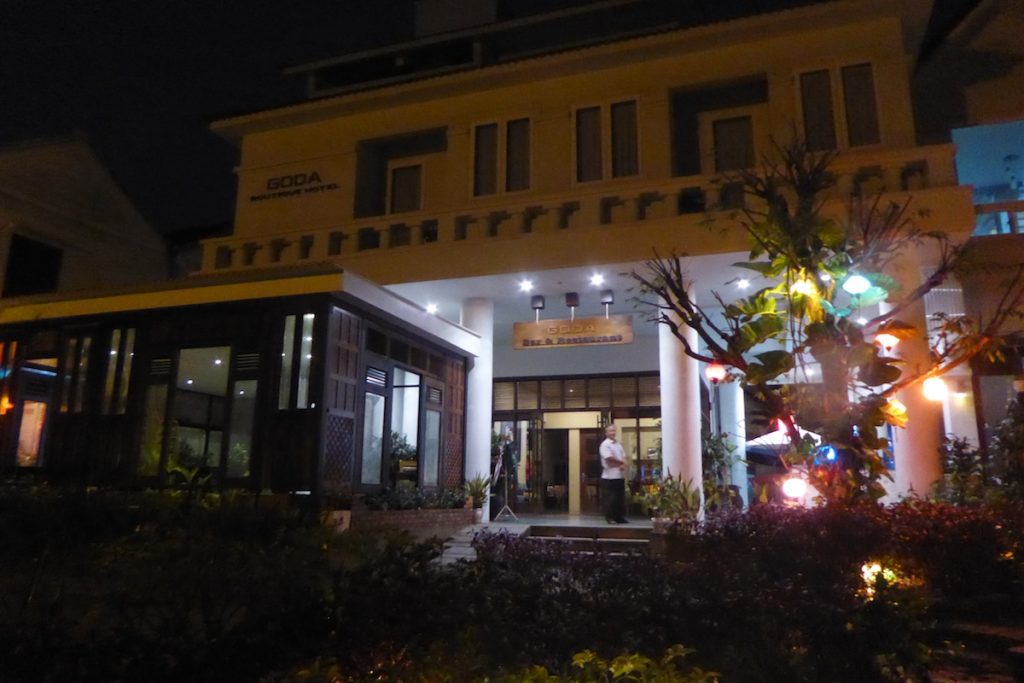
Back to Hoi An and our beach break during our travels through Vietnam.
The Goda is half way between the famous old town of Hoi An and the coast so we were hoping for some culture in the town, and some sun on the beach. The weather had something to say, and for pretty much the first time on our trip we had dull, drizzly but warm conditions. Not beach weather. So most of our time was spent strolling through the beautiful streets and alleys of the old town of Hoi An.
Compared to the mayhem and bustle of Ho Chi Minh Hoi An really is a quiet backwater, a complete contrast to the melee of motor cycles, cars and people. That is true even with the thousands of tourists that it’s ancient Chinese temples and buildings, pretty river lit up by floating lights, and countless Chinese lanterns strung across the streets attract. Many of these tourists seem to be Chinese (along with the now familiar Chinese tourist behaviour), but many of the ladies dress in beautiful local attire and stroll elegantly around the town just adding to the atmosphere.
Hoi An itself has a long history, going back as far as 2,200 years. In those times it was actually on the coast and grew as an important and busy port for the Champa kingdom from the 2nd to the 10th centuries. From the 15th century, for the next four hundred years, Hoi An (known as Faifoo to Western traders) was one of Southeast Asia’s major ports. Traders from China, Japan, the Netherlands, Portugal, Spain, France, Britain, America and all around South East Asia converged in their ships on the town’s warehouses that were filled with riches including silk, fabrics, paper, porcelain, areca nuts, pepper, Chinese medicines, elephant tusks, beeswax, mother-of-pearl and lacquer. The Chinese and Japanese left their mark on the town, with the ancient Chinese Assembly Halls still forming a destination for ethnic Chinese communities in vietnam. The town continued to operate as a port until the river silted up in the late 19th century.
Fortunately for us, a pact made by both sides during the war with the Americans left Hoi An virtually untouched by the conflict and a tourist boom in the 1990s has transformed the economy of the area. In 1999 it was declared a UNESCO World Heritage site and now the unique history and buildings of the old town, virtually untouched for several centuries, are protected. In fact, to even walk the streets of the old town you have to but a ticket (which lasts the duration of your stay) and which also gives you access to up to 5 of the ancient buildings. In the old town there are 800 ancient, protected, buildings. Only 22 of these are open to the public and some of these are still used as private dwellings.
It is a slightly strange experience visiting these private homes. Inside is generally dark, the one we visited fronted the street one side, with the rear opening out onto the river and had limited windows due to it being mid terrace and long and narrow. There are plaques revealing details about construction and use, and several artefacts are displayed throughout the rooms. But the buildings are small, and large tour groups greedily consume the available space somewhat destroying the atmosphere and feel of the place.
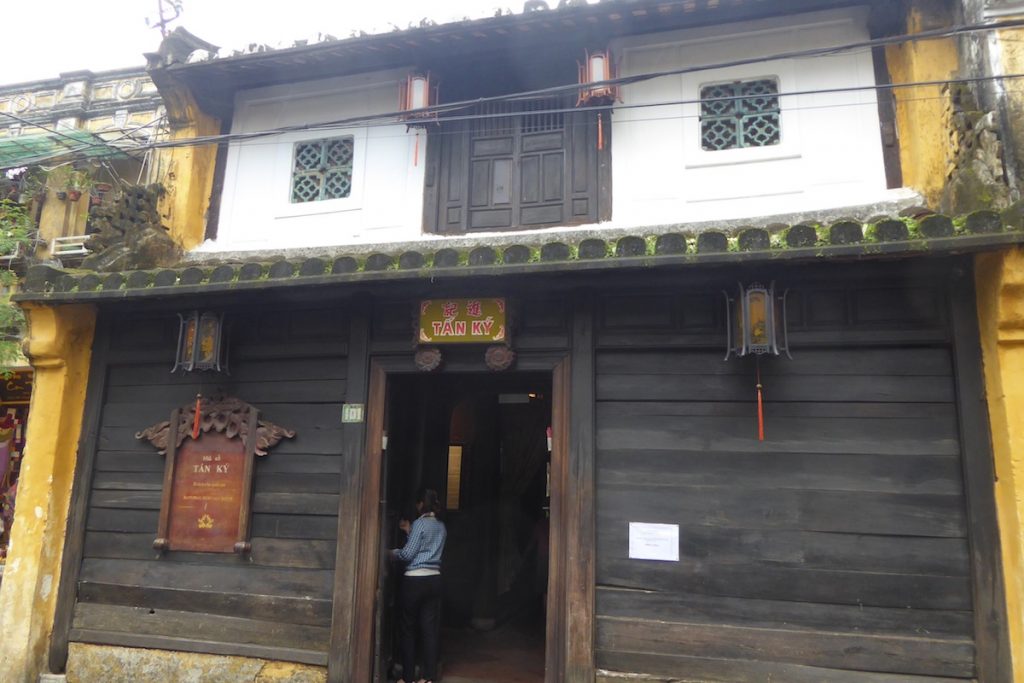
Visiting the assembly rooms was slightly better, mainly because they are bigger and better able to deal with the numbers of visitors, although these seem slightly jaded and generally in need of a little TLC. It makes you wonder where the money generate by the ticket sales actually goes.
Probably the most famous of the old buildings though is the Japanese covered bridge. The first bridge was constructed in 1590, and it has been rebuilt and changed a number of times during its life. However, it is still faithful to its original design with a pair of stone dogs guarding one entrance and a pair of stone monkeys guarding the other. A small room in the centre of the bridge on the northern side is a temple dedicated to the Tao god of weather and the locals will still go there to pray to stave off natural disasters.
For me though the real beauty of the town is revealed after the sun goes down. Then the streets are lit up by hundreds, if not thousands, of lanterns strung across the streets or decorating shop windows. The shops themselves are bright and colourful and, as I mentioned earlier, the atmosphere is enhanced by the traditional dress sported by many of the people strolling around.
If you go down to the river front, you’ll find plenty of boatmen (and women) willing to take you for a trip on the water. The thing to do is to buy a tea light, and set it afloat on the water and make a wish. We’d already ticked that box when we were out on the Ganges, a far more spiritual place, so we skipped the boat ride. The boats, the tea lights bobbing in the water and the reflections of the lanterns multiplied by the ripples make for a magical memory though, and if anything the streets made to glisten by the rain that had fallen brought even more light and colour to the old town.
As usual, pictures are far more eloquent than any words that I write so:
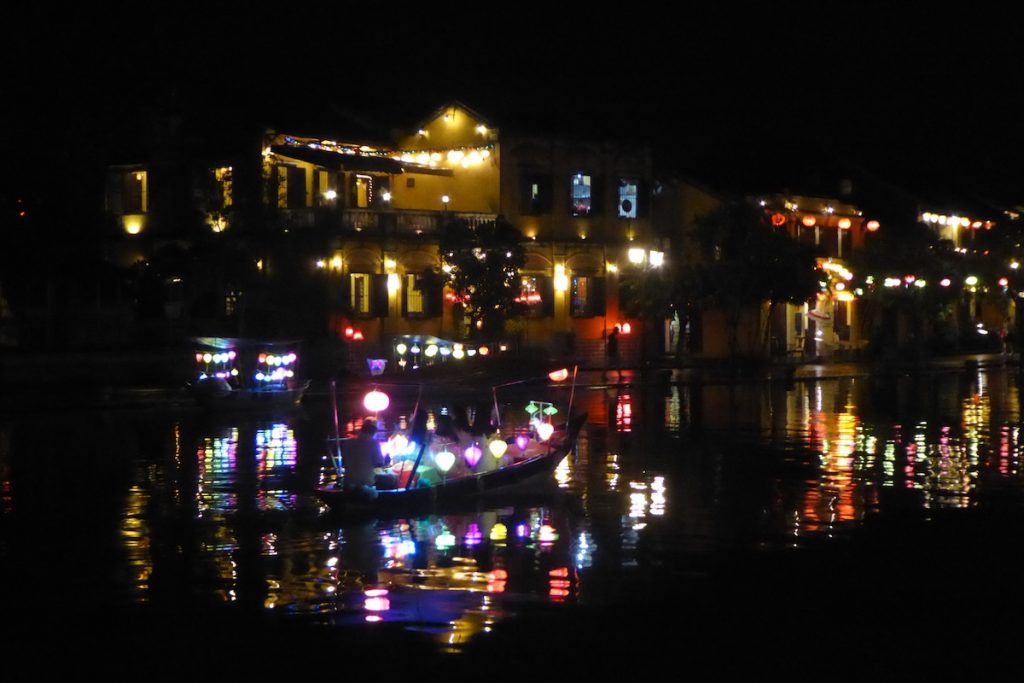
I mentioned earlier that we had hoped to spend a bit of time relaxing on the beach at Na Trang. I also mentioned that it was dull and wet.
That didn’t stop us though, and one morning we jumped on the free bikes from the hotel and set off down the lanes and across the paddy fields to the ocean. In truth, the weather did somewhat spoil what would have been a lovely view across the fields. The skies were flat and gray, and light showers kept breaking out. Worst of all though was the wind. When we arrived at the beach, instead of a golden beach stretching for miles into the distance we were greeted by a grey coast disappearing into a gloom of spray and rain. A day lazing on the beach would have been nice, but hey, we’ve been lucky so far and on the other hand it gave us more chance to stroll through the streets of this wonderful old town and soak up the atmosphere of a unique amalgamation of cultures in a unique part of Vietnam.
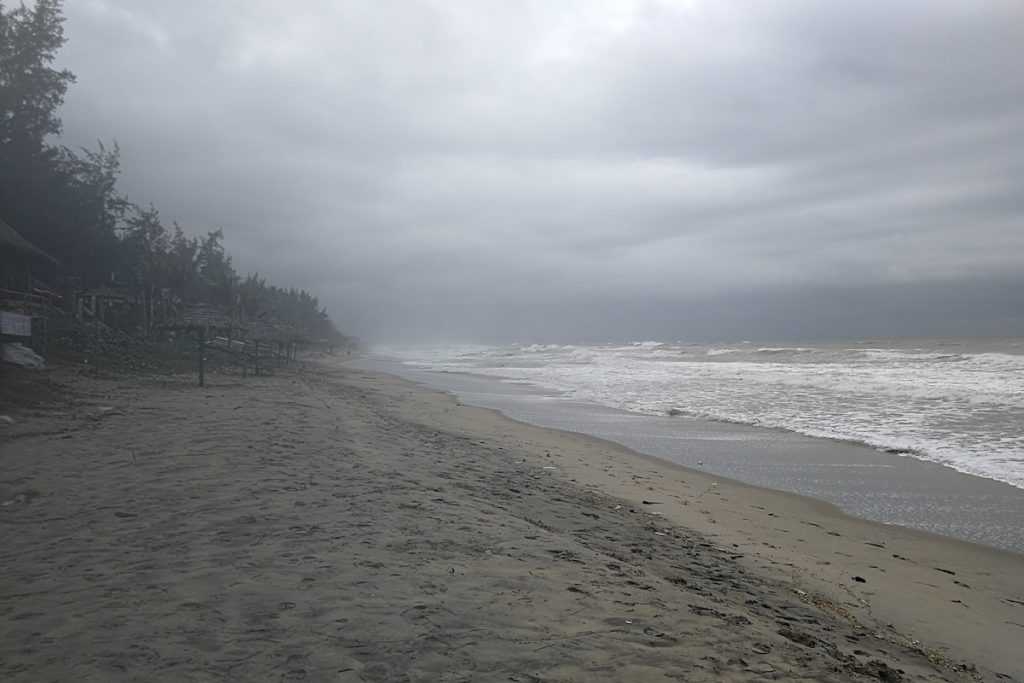
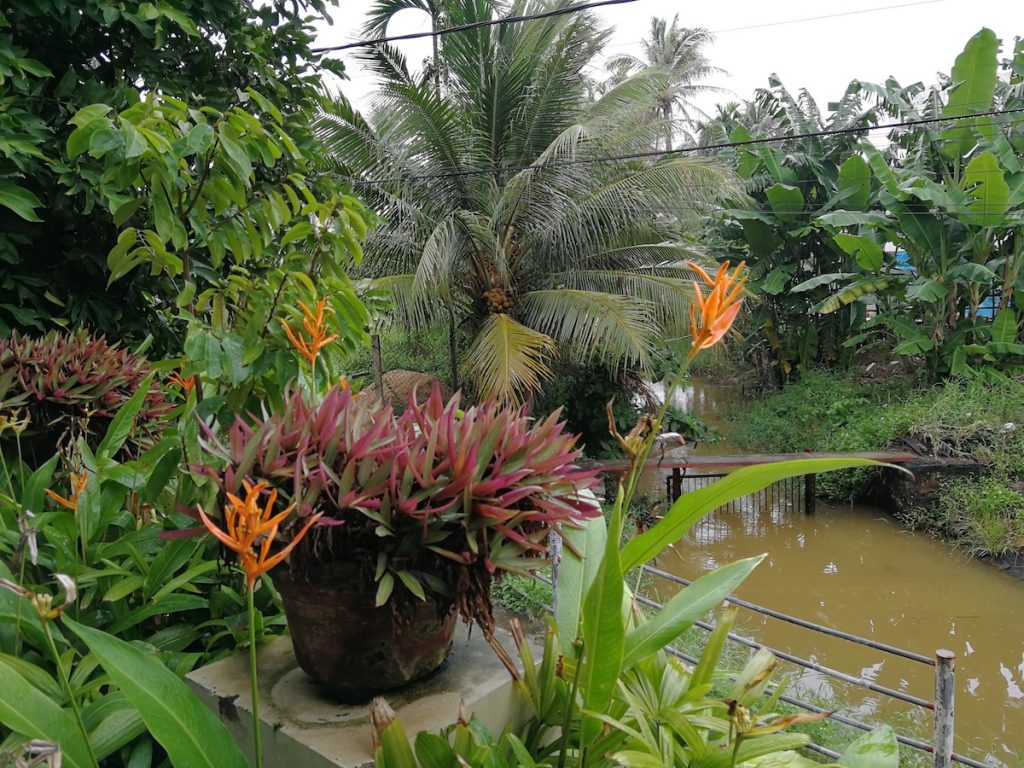
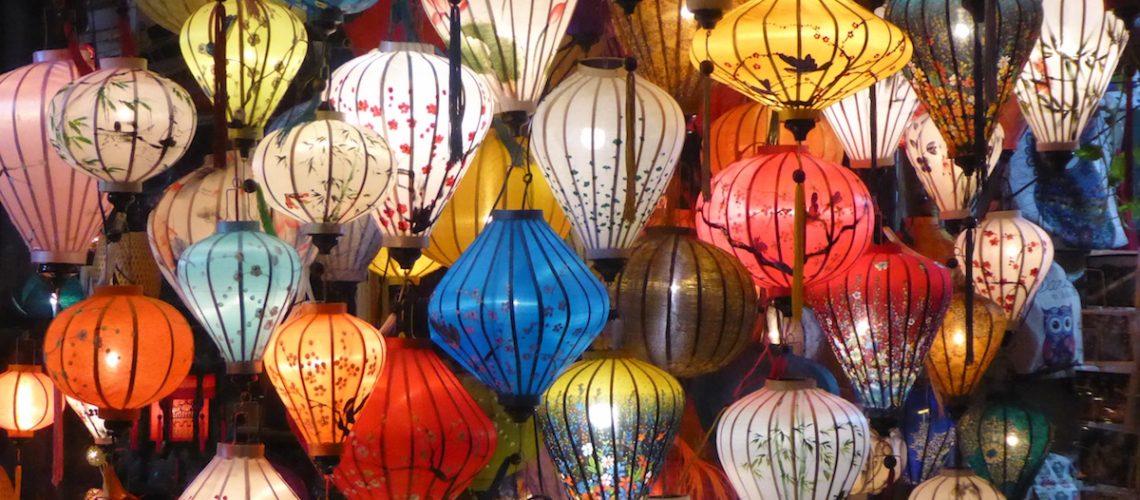
1 thought on “The Lanterns of Old Hoi An 🇻🇳”
Hoi An is one of my favourite places in the world. I just loved the lanterns and the shopping was tremendous. I hope you bought something special! Hilary